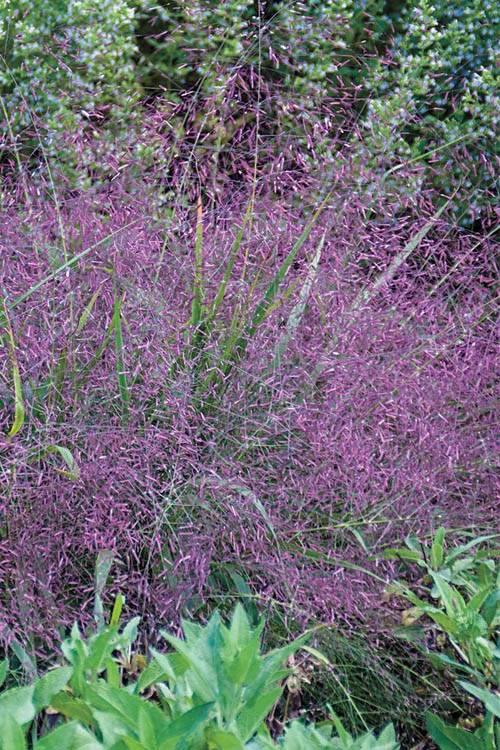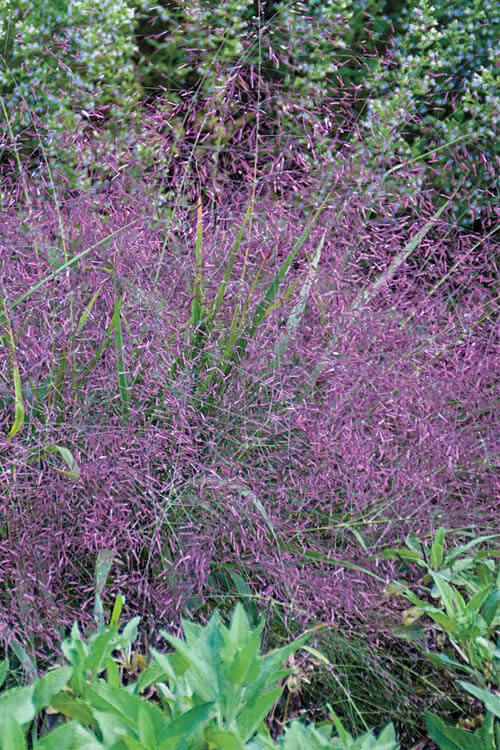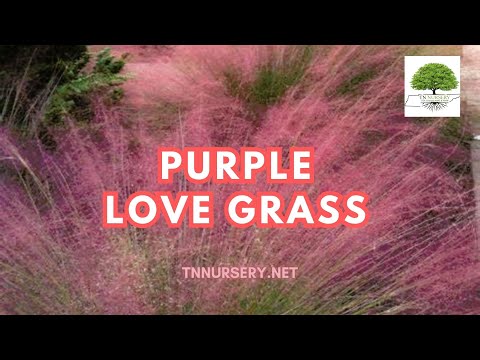Purple Love Grass for Sale (Eragrostis Pectinacea)
Purple Love Grass (Eragrostis Pectinacea) - When thinking about enhancing your garden or landscape, you might wonder which plants can provide beauty without demanding too much care. This delightful grass not only brings striking purple hues to your space but is also incredibly easy to maintain.
With its ability to thrive in tough conditions, like poor soils and drought, this plant shows that resilience can be beautiful too. In this guide, we'll explore everything you need to know about planting and taking care of it, so you can enjoy its charming look while spending less time on upkeep. Let's dig in!
Purple love grass is a perennial warm-season plant appreciated for its ornamental beauty and ability to thrive in poor soils. To care for it, plant in full sun with sandy soil, maintain a seeding rate of about 80-100 seeds per square foot, and enjoy its stunning seed heads which bloom mid-summer, creating a vibrant display in your landscape.
Unique Characteristics of Purple Love Grass (Eragrostis Pectinacea)
One of the most striking features of Eragrostis spectabilis is its lovely misty appearance when blooming, captivating many gardeners. The delicate lavender florets emerge from slender stems, creating a visual feast that gently sways in the summer breeze.
Imagine walking through a sun-drenched garden where the plant dances like a sea of lavender under the sunlight, drawing in not just the eyes, but also pollinators like butterflies and bees, enhancing the ecological balance of your space.
Adding to its beauty is the plant's remarkable adaptability. This hardy perennial thrives in poor soils, making it an excellent choice for challenging spots where you might have struggled with other plants. Whether you're dealing with sandy soils or areas exposed to winter salts, Eragrostis pectinacea holds its ground beautifully. Interestingly enough, it can even grow under Black Walnut trees, where most plants struggle due to juglone toxicity, giving gardeners more flexibility in plant selection.
Purple Love Grass typically grows to a height of 1 to 2 feet, boasting an upright form that allows it to stand out prominently. Unlike crabgrass, which tends to sprawl across the ground without notable blooms, Eragrostis pectinacea maintains an eye-catching stature throughout much of the growing season.
When considering planting options, it's essential to realize its minimal invasion potential. Although it spreads through rhizomes and seeds, controlling its growth is simple; regular mowing keeps it in check while simultaneously allowing it to crowd out unpleasant weeds like crabgrass. This characteristic not only enhances your landscape but also reduces the need for constant weeding efforts.
Furthermore, understanding the seeding process enriches your approach to cultivating this stunning plant.
Another fascinating aspect is that one ounce of seeds contains approximately 280,000 seeds! Given this quantity, familiarity with effective seeding rates can help you achieve optimal coverage-about 80-100 seeds per square foot, covering around 2,800 to 3,500 square feet when planted appropriately. Such generous yields mean that even small gardening projects can result in gorgeous swathes of lavender love all summer long.
As you contemplate adding Eragrostis pectinacea to your landscape, keep these unique characteristics in mind. They not only enhance aesthetic value but also define how well this resilient plant will perform in various environments. Knowing how to leverage these traits leads to a successful gardening experience that celebrates both beauty and practicality.
Transitioning now from these distinctive traits opens up an opportunity to explore how to create the perfect environment for this vibrant plant.
Optimal Growing Conditions of Eragrostis Pectinacea
For Purple Love Grass to flourish, several optimal growing conditions must be met. This perennial beauty thrives in full sun, needing at least six to eight hours of direct sunlight each day. Picture a hot summer day when the sun bathes everything in golden light; that's the kind of warmth this plant craves. Interestingly, it has an impressive ability to tolerate drier conditions as well, making it a wise choice for areas where water conservation is key or where droughts may occur.
Exposure
Purple Love Grass (Eragrostis spectabilis) flourishes in full sun, needing at least 6 hours of plain sunlight daily. It can tolerate partial shade but blooms more vibrantly and maintains its compact, attractive form when grown in full sun conditions.
Height at Maturity
Under 3 Feet
Usage
Landscaping
Shipped As
Bare root
Ships
USPS
Planting Zones
5-9


